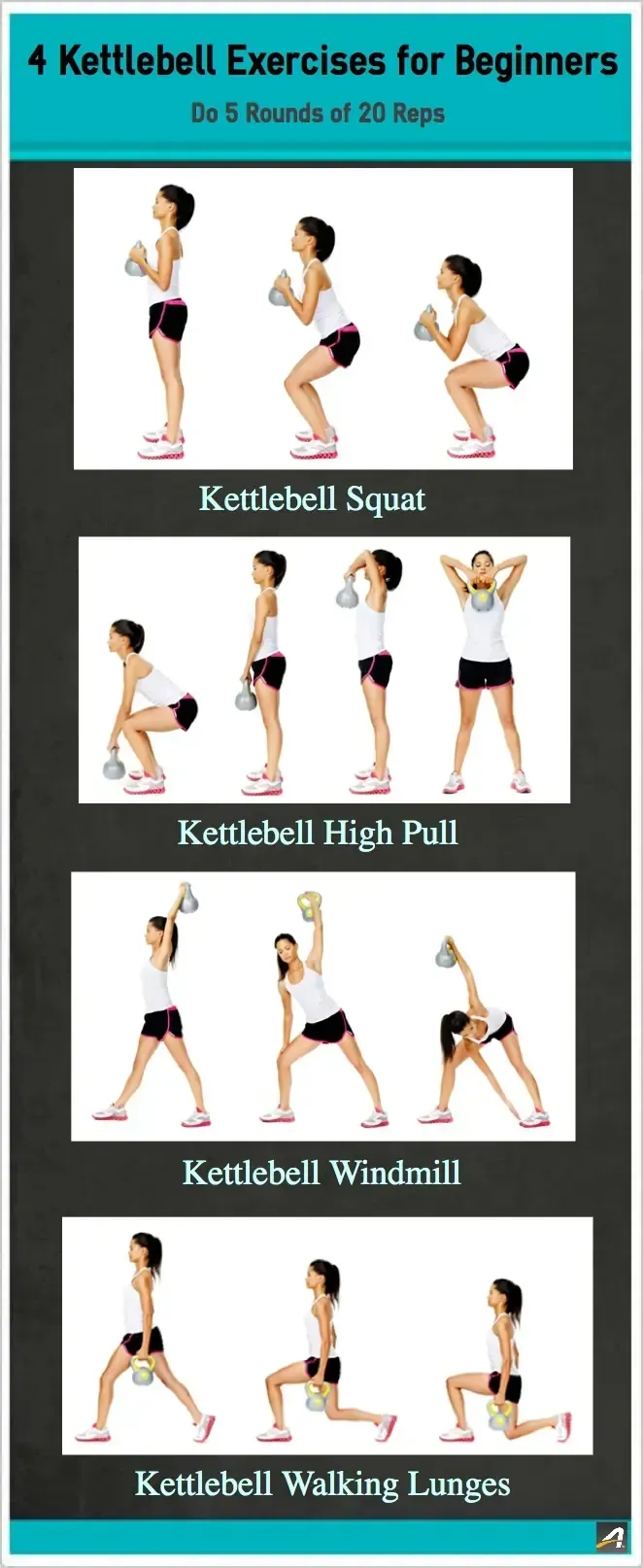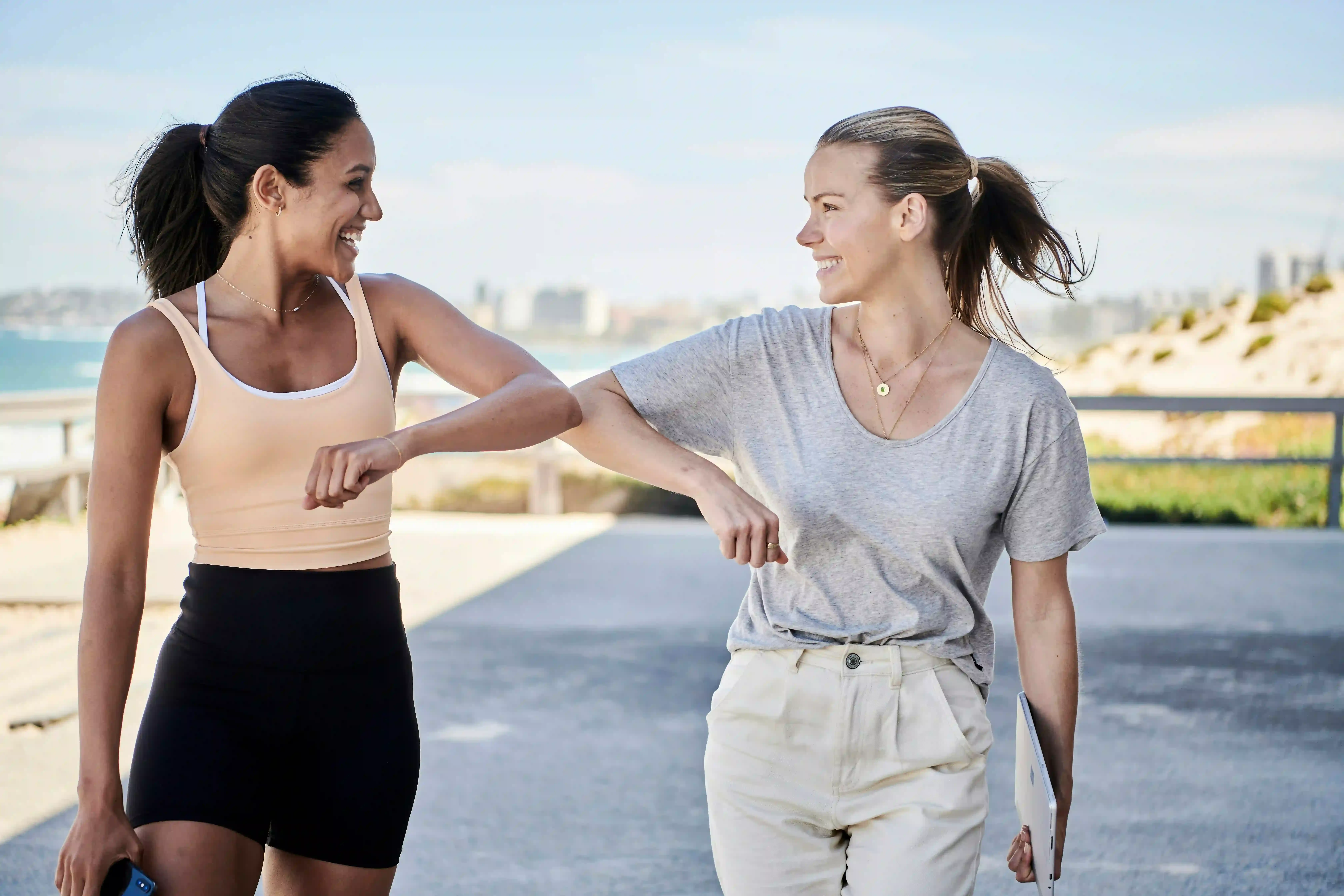Table of Contents
Thinking about picking up a kettlebell but feeling a bit lost? Maybe you've seen them in the gym corner or online and wondered if they're just for burly dudes swinging serious weight. The truth is, a kettlebell can be an incredibly effective tool, especially when you're just starting out.
Why Start a Kettlebell Women's Workout for Beginners?

Why Start a Kettlebell Women's Workout for Beginners?
More Bang for Your Buck (Time-Wise)
let's be real. Who has hours to spend in the gym every single day? Most of us are juggling work, family, maybe attempting a social life. Akettlebell women's workout for beginnersis fantastic because it’s efficient. You can get a full-body workout in a relatively short amount of time. Kettlebell movements often work multiple muscle groups at once – think swings hitting your glutes, hamstrings, back, and core all at once. This isn't like doing endless bicep curls; you're training your body to move as a connected unit, which is how we actually function in the real world.
Builds Real-World Strength, Not Just Gym Muscles
Picking up groceries, lifting a kid, moving furniture – life requires practical strength. Kettlebells excel here. The off-center weight challenges your stability and forces your core to work overtime just to control the bell. It's not about looking bulky; it's about becoming genuinely stronger and more resilient. My own first experience felt awkward as heck, like trying to control a bowling ball tied to a handle, but after a few weeks, everyday tasks felt noticeably easier. That's the kind of payoff you get.
- Boosts metabolism efficiently.
- Improves grip strength significantly.
- Develops powerful hips and core.
- Adds variety to your routine.
Simple, Yet Hugely Effective
You don't need a room full of equipment to get a great kettlebell workout. One or two kettlebells can be enough to start. The basic movements, while needing proper form (which we'll cover!), aren't overly complex. You learn a few key patterns – like the swing, goblet squat, and press – and you have a foundation for tons of variations and progressions. It's less intimidating than navigating a maze of machines and more engaging than staring at a treadmill screen. It’s about mastering a few fundamental skills that build a strong, capable body.
Mastering the Basics: Essential Kettlebell Exercises for Women Beginners

Mastering the Basics: Essential Kettlebell Exercises for Women Beginners
The Kettlebell Swing: Your Power Generator
Alright, let's talk about the swing. If you learn one thing with a kettlebell, make it this. The swing isn't some random arm flail; it's a powerful hip hinge movement. Think of it like jumping, but sideways. You're using your glutes and hamstrings to drive the bell forward, not your arms to lift it. Get this right, and you unlock serious power potential. Too many beginners try to squat the swing or lift with their shoulders, which looks awkward and feels terrible. It's all in the hips, snapping them forward sharply like you're trying to launch the bell at a wall (but, you know, don't actually do that).
The Goblet Squat: Your Foundational Strength Builder
Next up, the goblet squat. This one is fantastic for learning proper squat depth and keeping your chest upright. Holding the kettlebell at your chest acts as a counterbalance, making it easier to sit back into your hips. It's a far more natural movement for many people compared to a barbell squat. Focus on keeping your elbows tucked in, sitting down between your knees, and keeping your back straight. This exercise builds strength in your legs and core, essential for pretty much everything else you'll do with a kettlebell (or just living life).
Here are some key form points to nail down for these foundational moves:
- For the Swing: Hinge at the hips, keep your back flat, drive with your glutes, don't lift with your arms.
- For the Goblet Squat: Chest up, sit back and down, keep elbows inside knees, maintain a straight back.
- Start light! Don't grab the heaviest bell you see. Focus on learning the movement pattern first.
Putting It Together: Creating Your First Kettlebell Women's Workout for Beginners

Putting It Together: Creating Your First Kettlebell Women's Workout for Beginners
Keep It Simple, Seriously
you've got the swing down (or you're working on it!) and the goblet squat feels less awkward. Now, how do you string these together into an actual workout? Don't overthink this. The goal for your firstkettlebell women's workout for beginnersis consistency and building good habits with basic movements. Forget complex circuits or trying to mimic what you see advanced folks doing online. Your first few workouts should focus on practicing the swing and the goblet squat. Maybe add a simple press or row later, but start with the fundamentals. Think of it like learning an instrument – you don't play a symphony on day one.
"Master the basics before you even think about the fancy stuff."
Your First Workout Template
Here’s a ridiculously simple template you can use. Warm up for 5-10 minutes (light cardio, dynamic stretches). Then, pick your exercises. For a total beginner, sticking to just swings and goblet squats is perfectly fine. Do a few sets of each. Focus on quality over quantity. Don't try to do as many reps as possible and let your form fall apart. Aim for controlled, powerful movements. Rest adequately between sets so you feel ready for the next one. Finish with a cool-down stretch.
Exercise | Sets | Reps | Focus |
|---|---|---|---|
Kettlebell Swing | 3-4 | 8-10 | Hip drive, flat back |
Goblet Squat | 3-4 | 8-12 | Chest up, depth |
Listen to Your Body and Progress Smartly
Consistency beats intensity when you're starting out. Don't try to do this workout every single day. Two or three times a week is plenty to start, giving your body time to recover and adapt. As you get stronger and the movements feel more natural, you can slowly add more reps, sets, or even a new exercise like a kettlebell press or a single-arm row. The key is gradual progression. If something feels sharp or wrong, stop. It's okay to take a lighter day or repeat the same workout until you feel solid. This isn't a race; it's about building a sustainable practice.
- Start with 2-3 workouts per week.
- Increase reps or sets when the current load feels easy.
- Consider a slightly heavier bell only when form is perfect with the current weight.
- Never push through pain.
- Consistency is your best friend.
Troubleshooting & FAQs for Your Kettlebell Journey

Troubleshooting & FAQs for Your Kettlebell Journey
"This Feels Weird": Tackling Common Form Issues
you've grabbed a bell, you're trying the swing, and it just doesn't feel right. Maybe your back is rounding, your knees are aching during squats, or the bell is banging against your forearms. This is completely normal when you're starting akettlebell women's workout for beginners. The most frequent culprit is misunderstanding the movement pattern, especially the hip hinge for the swing. You're probably trying to squat it or lift it with your arms. Remember, the power comes from snapping your hips forward forcefully. For the goblet squat, make sure you're sitting *back* like you're aiming for a chair, not just dropping straight down.
It helps immensely to film yourself from the side. What you *feel* you're doing and what's actually happening can be two totally different things. Don't be shy about watching your own awkwardness; it's the fastest way to spot errors. Compare your video to a good tutorial (there are tons of solid ones online, look for certified instructors). Small tweaks can make a huge difference in how the movement feels and its effectiveness.
Picking the Right Weight and How Often to Train
One of the biggest questions beginners have is, "What size kettlebell should I use?" For most women starting out with akettlebell women's workout for beginners, an 8kg (around 18 lbs) or 12kg (around 26 lbs) bell is a good starting point for swings and squats. If an exercise feels too easy for 8-10 reps *with good form*, maybe try the next size up. If you can't complete 5 reps with decent form, the bell is too heavy. It’s better to go too light and perfect your technique than go too heavy and risk injury or build bad habits.
As for how often, consistency trumps everything. Aim for 2-3 times per week. This gives your body time to recover and get stronger between sessions. Trying to do too much too soon is a fast track to burnout or injury. Think of it as building a foundation, brick by brick, not trying to erect a skyscraper overnight.
Quick Guide: Common Questions
- **What weight to start with?** 8kg or 12kg is a solid bet for most women.
- **How many times a week?** 2-3 times to start is plenty.
- **My hands hurt!** Use chalk if needed, but often it's grip tension. Relax your grip slightly at the top of the swing.
- **The bell hits my forearm on cleans/snatches?** You're likely muscling it up instead of letting it float and punch through. Stick to swings and squats first!
Dealing with Soreness and Staying Motivated
You're going to be sore. Probably in places you didn't know existed, especially your glutes and hamstrings after those swings. That's your body adapting. Hydration, good nutrition, and adequate sleep are your best friends here. Gentle movement like walking or stretching can also help. Don't mistake soreness for injury; an injury is sharp, specific pain, while soreness is usually a dull ache across a muscle group that gets better with movement.
Staying motivated means finding a routine you enjoy and seeing the progress. Track your workouts – maybe note the weight you used and how many reps you did. Seeing those numbers go up is a powerful motivator. Also, remember *why* you started. Was it to feel stronger? Have more energy? Fit into those jeans? Keep that goal in mind when you don't feel like training. It's not about being perfect; it's about showing up consistently and putting in the work.
Your Kettlebell Journey Starts Now
So there you have it. Starting a kettlebell women's workout for beginners isn't some mythical quest. It's about picking the right weight, learning a few solid moves, and being consistent. You don't need hours in the gym or complex choreography. Just a little space, a kettlebell, and the willingness to give it a shot. You'll build strength, feel more capable, and maybe even have a little fun swinging that cannonball with a handle. What are you waiting for?